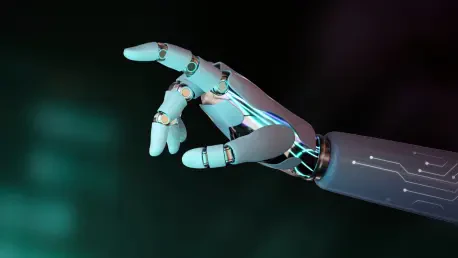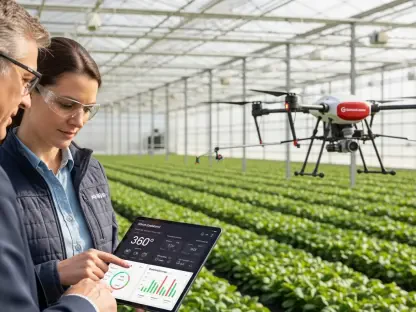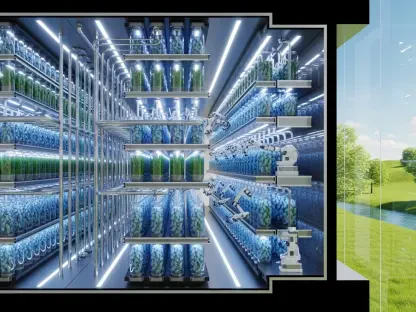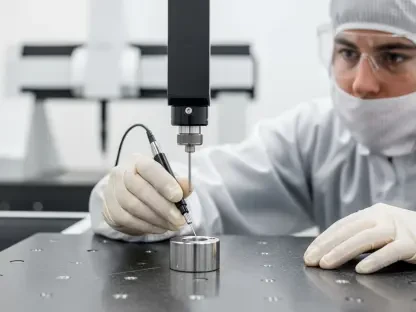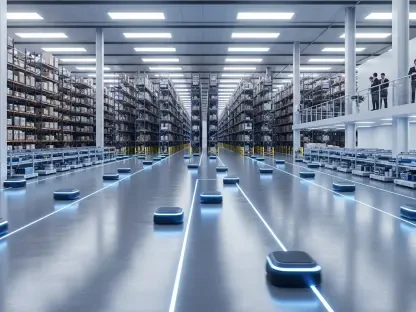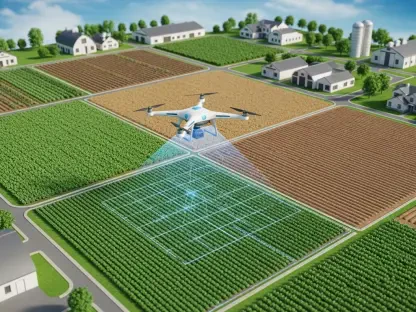In an era where technology reshapes industries at an unprecedented pace, artificial intelligence stands as a transformative force, particularly in manufacturing, where efficiency and innovation are paramount. With AI projected to contribute a staggering $13 trillion to the global economy by 2030, according to recent industry estimates, the potential for radical change is undeniable. One tech giant has emerged as a frontrunner in this space, leveraging AI to redefine digital manufacturing processes, streamline operations, and prioritize sustainability. This pioneering approach not only enhances productivity but also offers a blueprint for how traditional industries can adapt to a digital future. The implications are vast, touching everything from factory automation to environmental impact, and signal a shift toward smarter, more responsive industrial systems.
AI as a Catalyst for Operational Excellence
Redefining Efficiency Through Machine Learning
The integration of AI into manufacturing processes marks a significant leap toward operational efficiency, with machine learning models playing a pivotal role in optimizing complex systems. These advanced algorithms, originally honed for e-commerce applications, have found profound relevance in industrial settings by enabling predictive maintenance, reducing downtime, and enhancing production workflows. By analyzing vast datasets in real time, AI identifies patterns that human oversight might miss, allowing for preemptive adjustments to machinery and processes. This capability translates into substantial cost savings and improved output quality, positioning companies to meet market demands with greater agility. The adoption of such technology reflects a broader trend where data-driven decision-making becomes the backbone of competitive manufacturing strategies, ensuring that every step of the production cycle is as efficient as possible.
Enhancing Human-Machine Collaboration
Beyond raw efficiency, AI fosters a new era of collaboration between humans and machines, fundamentally altering workplace dynamics in manufacturing environments. Voice-activated assistants and intelligent interfaces, inspired by consumer technologies, are now being adapted to factory floors to streamline communication and task management. These tools enable workers to interact with systems seamlessly, issuing commands or receiving real-time updates on production status, which minimizes errors and boosts productivity. This synergy not only empowers employees by reducing manual oversight but also allows for a more strategic allocation of human resources to creative or problem-solving tasks. As a result, the workforce becomes more engaged and capable of handling complex challenges, while machines handle repetitive or data-intensive duties. This harmonious integration underscores the potential for AI to transform not just processes, but the very nature of industrial labor.
Driving Sustainability and Innovation with AI
Pioneering Green Manufacturing Solutions
Sustainability has emerged as a critical priority for modern industries, and AI is proving to be an indispensable ally in achieving ambitious environmental goals, such as reaching net-zero carbon emissions within the coming decades. Through sophisticated energy management systems, AI optimizes resource usage in warehouses, logistics, and production facilities, significantly cutting down on waste and energy consumption. For instance, cloud-based platforms that power AI applications are often designed to be far more energy-efficient than traditional data centers, offering a scalable model for reducing carbon footprints. Additionally, predictive analytics help in forecasting demand and managing inventory with precision, further minimizing overproduction and material waste. These advancements highlight how technology can align with ecological objectives, providing manufacturers with tools to balance profitability with planetary responsibility.
Innovating with Next-Generation AI Models
The frontier of AI innovation continues to expand with the development of cutting-edge models capable of processing diverse data types, including text, images, and video, to support intricate manufacturing needs. These advanced systems tackle challenges like latency and cost-effectiveness, enabling real-time data interpretation that drives smarter decision-making on the factory floor. With thousands of generative AI applications under exploration, the potential to customize solutions for specific industrial challenges is immense, from automating quality control to generating optimized design prototypes. Such tools are not just incremental improvements but represent a paradigm shift in how manufacturing processes are conceptualized and executed. By embracing these innovations, industries can achieve unprecedented levels of precision and adaptability, ensuring they remain competitive in a rapidly evolving digital landscape. This focus on next-generation technology reaffirms AI’s role as a cornerstone of future industrial growth.
Reflecting on a Transformative Journey
Lessons from a Technological Pioneer
Looking back, the journey of integrating AI into manufacturing revealed a profound shift in how industries approached efficiency and sustainability. The strategic deployment of machine learning and advanced models demonstrated that technology could streamline operations while addressing pressing environmental concerns. Leaders in this space set a high standard by aligning technological advancements with broader business and ecological goals, proving that innovation need not come at the expense of responsibility. This historical perspective offered valuable insights into balancing short-term gains with long-term vision, showing that digital tools could redefine industrial benchmarks when applied thoughtfully. For other manufacturers, these lessons served as a guide to navigate their own paths toward modernization, emphasizing the importance of adaptability in a tech-driven world.
Charting the Path Forward
As the impact of AI on manufacturing became clearer, the focus shifted to actionable strategies for sustained progress. Industry stakeholders were encouraged to invest in scalable AI solutions that prioritized both operational excellence and environmental stewardship. Collaborating with technology providers to customize tools for specific needs emerged as a practical next step, ensuring that innovations remained relevant to unique challenges. Additionally, fostering a culture of continuous learning within organizations helped workforces stay abreast of evolving tools and methodologies. By building on past achievements, manufacturers could look ahead to a future where AI not only enhanced productivity but also contributed to a more sustainable industrial ecosystem. This forward-thinking approach promised to keep the sector resilient and innovative in the face of emerging global demands.
